Brownstone Institute
It Was Birx. All Birx.
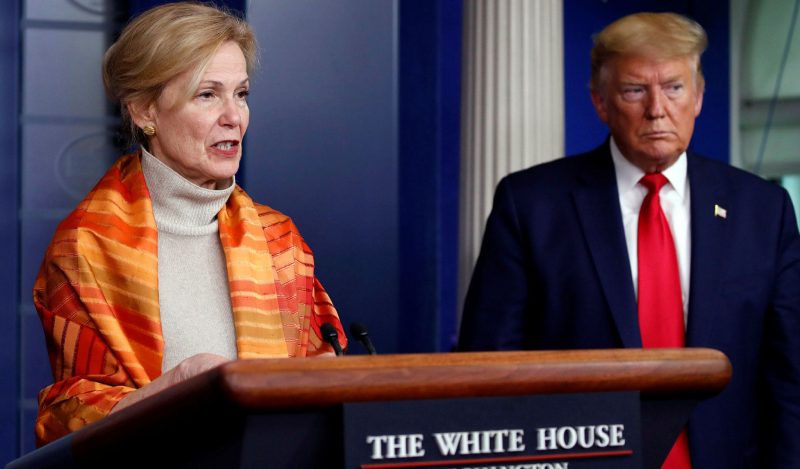
BY
In two previous articles, I looked into the shady circumstances surrounding Deborah Birx’s appointment to the White House Coronavirus Response Task Force and the laughable lack of actual science behind the claims she used to justify her testing, masking, distancing and lockdown policies.
Considering all that, the questions arise: Who was actually in charge of Deborah Birx and whom was she working with?
But first: Who cares?
Here’s why I think it’s important: If we can show that Birx and the others who imposed totalitarian anti-scientific testing, masking, social distancing, and lockdown policies, knew from the get-go that these policies would not work against an airborne respiratory virus, and nevertheless they imposed them FOR REASONS OTHER THAN PUBLIC HEALTH, then there is no longer acceptable justification for any of those measures.
Furthermore, whatever mountains of post-facto bad science were concocted to rationalize these measures are also completely bunk. Instead of having to go through each ridiculous pseudo-study to demonstrate its scientific worthlessness, we can throw the whole steaming pile in the garbage heap of history, where it belongs, and move on with our lives.
In my admittedly somewhat naive optimism, I also hope that by exposing the non-scientific, anti-public-health origins of the Covid catastrophe, we may lower the chances of it happening again.
And now, back to Birx.
She did not work for or with Trump
We know Birx was definitely not working with President Trump, although she was on a task force ostensibly representing the White House. Trump did not appoint her, nor did the leaders of the Task Force, as Scott Atlas recounts in his revelatory book on White House pandemic lunacy, A Plague Upon Our House. When Atlas asked Task Force members how Birx was appointed, he was surprised to find that “no one seemed to know.” (Atlas, p. 82)
Yet, somehow, Deborah Birx – a former military AIDS researcher and government AIDS ambassador with no training, experience or publications in epidemiology or public health policy – found herself leading a White House Task Force on which she had the power to literally subvert the policy prescriptions of the President of the United States.
As she describes in The Silent Invasion, Birx was shocked when “at the halfway point of our 15 Days to Slow the Spread campaign, President Trump stated that he hoped to lift all restrictions by Easter Sunday.” (Birx, p. 142) She was even more dismayed when “mere days after the president had announced the thirty-day extension of the Slow the Spread campaign to the American public” he became enraged and told her “‘We will never shut down the country again. Never.’” (Birx, p. 152)
Clearly, Trump was not on board with the lockdowns, and every time he was forced to go along with them, he became enraged and lashed out at Birx – the person he believed was forcing him.
Birx laments that “from here on out, everything I worked toward would be harder—in some cases, impossible,” and goes on to say she would basically have to work behind the scenes against the President, having “to adapt to effectively protect the country from the virus that had already silently invaded it.” (Birx, pp. 153-4)
Which brings us back to the question: Where did Birx get the nerve and, more mysteriously, the authority to so blithely act in direct opposition to the President she was supposed to serve, on matters affecting the lives of the entire population of the United States?
Atlas regrets what he thinks was President Trump’s “massive error in judgment.” He argues that Trump acted “against his own gut feeling” and “delegated authority to medical bureaucrats, and then he failed to correct that mistake.” (Atlas, p. 308)
Although I believe massive errors in judgment were not unusual for President Trump, I disagree with Atlas on this one. In the case of the Coronavirus Response Task Force, I actually think there was something much more insidious at play.
Trump had no power over Birx or pandemic response
Dr. Paul Alexander, an epidemiologist and research methodology expert who was recruited to advise the Trump administration on pandemic policy, tells a shocking story in an interview with Jeffrey Tucker, in which bureaucrats at the Department of Health and Human Services (HHS) and lawyers from the Justice Department told him to resign, despite direct orders from President Trump and the White House: “We want you to understand that President Trump has no power,” they reportedly told Alexander. “He cannot tell us what to do.”
Alexander believes these bureaucrats represented the “deep state” which, he was told repeatedly, had decided first not to hire or pay him, and then to get rid of him. Alexander also writes in an upcoming exposé that the entrenched government bureaucracy, particularly at the NIH, CDC, and WHO, used the pandemic response to doom President Trump’s chances for reelection.
Was the entire anti-scientific totalitarian pandemic response, all over the world, a political maneuver to get rid of Trump? It’s possible. I would contend, however, that the politics were only a sideshow to the main event: the engineered virus lab leak and coverup. I believe the “deep state” Alexander repeatedly butted up against was not just the entrenched bureaucracy, but something even deeper and more powerful.
Which brings us back to deep state frontwoman Deborah Birx.
After lamenting Trump’s delegation of authority to “medical bureaucrats,” Scott Atlas also hints at forces beyond Trump’s control. “The Task Force was called ‘the White House Coronavirus Task Force,’” Atlas notes, “but it was not in sync with President Trump. It was directed by Vice President Pence.” (Atlas, p. 306) Yet, whenever Atlas tried to raise questions about Birx’s policies, he was directed to speak with Pence, who then failed to ever address anything with Birx:
“Given that the VP was in charge of the Task Force, shouldn’t the bottom-line advice emanating from it comport with the policies of the administration? But he would never speak with Dr. Birx at all. In fact, (Marc) Short [Pence’s chief of staff], clearly representing the VP’s interests above all else, would do the opposite, telephoning others in the West Wing, imploring friends of mine to tell me to avoid alienating Dr. Birx.” (Atlas, p. 165-6)
Recall that Pence replaced Alex Azar as Task Force director on February 26, 2020 and Birx’s appointment as coordinator, at the instigation of Asst. National Security Advisor Matt Pottinger, came on February 27th. Subsequent to those two appointments, it was Birx who was effectively in charge of United States coronavirus policy.
What was driving that policy, once she took over? As Birx writes, it was the NSC (National Security Council) that appointed her, through Pottinger, and it was her job to “reinforce their warnings” – which, I continue to speculate, were related to the accidental release of an enhanced pandemic potential pathogen from a US-funded lab in Wuhan.
Trump was probably made aware of this, as evidenced not just by his repeated mentions, but by what Time Magazine called his uncharacteristic refusal to explain why he believed it. The magazine quotes Trump saying “I can’t tell you that,” when asked about his belief in the lab leak. And he repeats, “I’m not allowed to tell you that.”
Why in the world was the President of the United States not allowed to override AIDS researcher/diplomat Birx on lockdown policies nor explain to the public why he believed there was a lab leak?
The answer, I believe, is that Trump was uncharacteristically holding back because he was told (by Birx, Pottinger and the military/intelligence/biosecurity interests for whom they worked) that if he did not go along with their policies and proclamations, millions of Americans would die. Why? Because SARS-CoV-2 was not just another zoonotic virus. It was an engineered virus that needed to be contained at all costs.
As Dr. Atlas repeatedly notes with great dismay: “the Task Force doctors were fixated on a single-minded view that all cases of COVID must be stopped or millions of Americans would die.” (Atlas, p. 155-6) [BOLDFACE ADDED]
That was the key message, wielded with great force and success against Trump, his administration, the press, the states, and the public, to suppress any opposition to lockdown policies. Yet the message makes no sense if you believe SARS-CoV-2 is a virus that jumped from a bat to a person in a wet market, severely affecting mostly people who are old and debilitated. It only makes sense if you think, or know, that the virus was engineered to be especially contagious or deadly (even if its behavior in the population at any given moment might not justify that level of alarm).
But, again, before indulging in more speculation, let’s get back to Birx. Who else did she (and her hidden handlers) bulldoze?
She dictated policy to the entire Trump administration
In his book, Atlas observes with puzzlement and consternation that, although Pence was the nominal director of the Task Force, Deborah Birx was the person in charge: “Birx’s policies were enacted throughout the country, in almost every single state, for the entire pandemic—this cannot be denied; it cannot be deflected.” (Atlas, p. 222)
Atlas is “dumbstruck at the lack of leadership in the White House,” in which, “the president was saying one thing while the White House Task Force representative was saying something entirely different, indeed contradictory” and, as he notes, “no one ever set her [Birx] straight on her role.” (Atlas, p. 222-223)
Not only that, but no matter how much Trump, or anyone in the administration, disagreed with Birx, “the White House was held hostage to the anticipated reaction of Dr. Birx” and she “was not to be touched, period.” (Atlas, p. 223)
One explanation for her untouchableness, Atlas suggests, is that Birx and her policies became so popular with the press and public that the administration did not want to “rock the boat” by replacing her before the election. This explanation, however, as Atlas himself realizes, crumbles in the face of what we know about Trump and the media’s hostility towards him:
“They [Trump’s advisors] had convinced him to do exactly the opposite of what he would naturally do in any other circumstance—to disregard his own common sense and allow grossly incorrect policy advice to prevail. … This president, widely known for his signature ‘You’re fired!’ declaration, was misled by his closest political intimates. All for fear of what was inevitable anyway—skewering from an already hostile media.” (Atlas, p. 300-301)
I would suggest, again, the reason for the seemingly inexplicable lack of gumption on Trump’s part to get rid of Birx was not politics, but behind-the-scenes machinations of the (to coin a moniker) lab leak cabal.
Who else was part of this cabal with its hidden agendas and oversized policy influence? Our attention naturally turns to the other members of the Task Force who were presumably co-engineering lockdown policies with Birx. Surprising revelations emerge.
There was no troika. No Birx-Fauci lockdown plan. It was all Birx.
It is universally assumed, by both those in favor and those opposed to the Task Force’s policy prescriptions, that Drs. Deborah Birx, Tony Fauci (head of NIAID at the time) and Bob Redfield (then director of the CDC) worked together to formulate those policies.
The stories told by Birx herself and Task Force infiltrator Scott Atlas suggest otherwise.
Like everyone else, at the onset of his book, Atlas asserts: “The architects of the American lockdown strategy were Dr. Anthony Fauci and Dr. Deborah Birx. With Dr. Robert Redfield… they were the most influential medical members of the White House Coronavirus Task Force.” (Atlas, p. 22)
But as Atlas’s story unfolds, he presents a more nuanced understanding of the power dynamics on the Task Force:
“Fauci’s role surprised me the most. Most of the country, indeed the entire world, assumed that Fauci occupied a directorial role in the Trump administration’s Task Force. I had also thought that from viewing the news,” Atlas admits. However, he continues, “The public presumption of Dr. Fauci’s leadership role on the Task Force itself…could not have been more incorrect. Fauci held massive sway with the public, but he was not in charge of anything specific on the Task Force. He served mainly as a channel for updates on the trials of vaccines and drugs.” (p. 98) [BOLDFACE ADDED]
By the end of the book, Atlas fully revises his initial assessment, strongly emphasizing that, in fact, it was primarily and predominantly Birx who designed and disseminated the lockdown policies:
“Dr. Fauci held court in the public eye on a daily basis, so frequently that many misconstrue his role as being in charge. However, it was really Dr. Birx who articulated Task Force policy. All the advice from the Task Force to the states came from Dr. Birx. All written recommendations about their on-the-ground policies were from Dr. Birx. Dr. Birx conducted almost all the visits to states on behalf of the Task Force.” (Atlas, p. 309-10) [BOLDFACE ADDED]
It may sound jarring and unlikely, given the public perception of Fauci, as Atlas notes. But in Birx’s book the same unexpected picture emerges.
Methinks the lady doth protest too much
As with her bizarrely self-contradictory statements about how she got hired, and her blatantly bogus scientific claims, Birx’s story about her mind-melded closeness with Fauci and Redfield falls apart upon closer examination.
In her book, Birx repeatedly claims she trusts Redfield and Fauci “implicitly to help shape America’s response to the novel coronavirus.” (Birx, p. 31) She says she has “every confidence, based on past performance, that whatever path the virus took, the United States and the CDC would be on top of the situation.” (Birx, p. 32)
Then, almost immediately, she undermines the credibility of those she supposedly trusts, quoting Matt Pottinger as saying she “‘should take over Azar, Fauci, and Redfield’s jobs, because you’re such a better leader than they are.’” (Birx, p. 38-9)
Perhaps she was just giving herself a little pat on the back, one might innocently suggest. But wait. There’s so much more.
Birx claims that in a meeting on January 31 “everything Drs. Fauci and Redfield said about their approach made sense based on the information available to me at that point,” even though “neither of them spoke” about the two issues she was most obsessed with: “asymptomatic silent spread [and] the role testing should play in the response.” (Birx, p. 39)
Then, although she says she “didn’t read too much into this omission,” (p. 39) just two weeks later, “as early as February 13” Birx again mentions “a lack of leadership and direction in the CDC and the White House Coronavirus Task Force.” (p. 54)
So does Debi trust Tony and Bob’s leadership or does she not? The only answer is more self-contradictory obfuscation.
Birx is horrified that nobody is taking the virus as seriously as they should: “then I saw Tony and Bob repeating that the risk to Americans was low,” she reports. “On February 8, Tony said that the chances of contracting the virus were ‘minuscule.’” And, “on February 29, he said, ‘Right now, at this moment, there is no need to change anything you’re doing on a day-to-day basis.’” (Birx, p. 57)
This does not seem like the kind of leader Birx can trust. She half-heartedly tries to excuse Redfield and Fauci, saying “I now believe that Bob and Tony’s words had spoken to the limited data they had access to from the CDC,” and then, in another whiplash moment, “maybe they had data in the United States that I did not.”
Did Tony and Bob provide less dire warnings because they had insufficient data or because they had more data than Birx did? She never clarifies, but regardless, she assures us that she “trusted them” and “felt reassured every day with them on the task force.” (Birx, p. 57)
If I was worried that the virus was not being taken seriously enough, Birx’s reports on Bob and Tony would not be very reassuring, to say the least.
Apparently, Birx herself felt that way too. “I was somewhat disappointed that Bob and Tony weren’t seeing the situation as I was,” she says, when they disagreed with her alarmist assessments of asymptomatic spread. But, she adds, “at least their number supported my belief that this new disease was far more asymptomatic than the flu. I wouldn’t have to push them as far as I needed to push the CDC.” (Birx, p. 78)
Is someone who disagrees with your assessment to the point that you need to push them in your direction also someone you “implicitly trust” to lead the US through the pandemic?
Apparently, not so much.
Although she supposedly trusts Redfield and sleeps well at night knowing he’s on the Task Force, Birx has nothing but disdain and criticism for the CDC – the organization Redfield leads.
“On aggressive testing I planned to have Tom Frieden [CDC director under Obama] help bring the CDC along,” she recounts. “Like me, the CDC wanted to do everything to stop the virus, but the agency needed to align with us on aggressive testing and silent spread.” (p. 122) Which makes one wonder: If she was so closely aligned with Redfield, the head of the CDC, why did Birx need to bring in a former director – in a direct challenge to the sitting one – to “bring the CDC along?” Who is “us” if not Birx, Fauci and Redfield?
Masks were another issue of apparent contention. Birx is frustrated because the CDC, led by her “we’ve-got-each-other’s-back” bestie, Bob Redfield (Birx, p. 31), will not issue strict enough masking guidelines. In fact, she repeatedly throws Bob’s organization under the bus, basically accusing them of causing American deaths: “For many weeks and months to come,” she writes, “I fretted over how many lives could have been saved if the CDC had trusted the public to understand that …masks would do no harm and could potentially do a great deal of good.” (Birx, p. 86)
Apparently, Fauci was not on board with the masking either, as Birx says that “getting the doctors, including Tom [Frieden] and Tony, to be in complete agreement with me about asymptomatic spread was slightly less of a priority. As with masks, I knew I could return to that issue as soon as I got their buy-in on our recommendations.” (Birx, p. 123)
Who is making “our recommendations” if not Birx, Fauci and Redfield?
The myth of the troika
Whether or not she trusted them (and it’s hard to believe, based on her own accounts, that she did), it was apparently very important to Birx that she, Fauci and Redfield appear as a single entity with no disagreements whatsoever.
When Scott Atlas, an outsider not privy to whatever power plays were happening on the Task Force, came in, his presence apparently rattled Birx (Atlas, p. 83-4), and for good reason. Atlas immediately noticed strange goings-on. In his book, he repeatedly uses words like “bizarre,” “odd” and “uncanny” to describe how Fauci, Redfield and Birx behaved. Most notably, they never ever questioned or disagreed with one another in Task Force meetings. Not ever.
“They shared thought processes and views to an uncanny level,” Atlas writes, then reiterates that “there was virtually no disagreement among them.” What he saw “was an amazing consistency, as though there were an agreed-upon complicity” (Atlas, pp. 99-100). They “virtually always agreed, literally never challenging one another.” (p. 101) [BOLDFACE ADDED]
An agreed-upon complicity? Uncanny agreement? Based on all of the disagreements reported by Birx and her repeated questioning and undermining of Bob and Tony’s authority, how can this be explained?
I would contend that in order to obscure the extent to which Birx alone was in charge of Task Force policy, the other doctors were compelled to present a facade of complete agreement. Otherwise, as with any opposition to, or even discussion of, potential harms of lockdown policies, “millions of Amercans would die.”
This assessment is strengthened by Atlas’s ongoing bafflement and distress at how the Task Force – and particularly the doctors/scientists who were presumably formulating policy based on data and research – functioned:
“I never saw them act like scientists, digging into the numbers to verify the very trends that formed the basis of their reactive policy pronouncements. They did not act like researchers, using critical thinking to dissect the published science or differentiate a correlation from a cause. They certainly did not show a physician’s clinical perspective. With their single-minded focus, they did not even act like public health experts.” (Atlas, p. 176)
Atlas was surprised, indeed stunned, that “No one on the Task Force presented any data” to justify lockdowns or to contradict the evidence on lockdown harms that Atlas presented. (Atlas, p. 206) More specifically, no data or research was ever presented (except by Atlas) to contradict or question anything Birx said. “Until I arrived,” Atlas observes, “no one had challenged anything she said during her six months as the Task Force Coordinator.” (Atlas, p. 234) [BOLDFACE ADDED]
Atlas cannot explain what he’s witnessing. “That was all part of the puzzle of the Task Force doctors,” he states. “There was a lack of scientific rigor in meetings I attended. I never saw them question the data. The striking uniformity of opinion by Birx, Redfield, Fauci, and (Brett) Giroir [former Admiral and Task Force “testing czar”] was not anything like what I had seen in my career in academic medicine.” (Atlas, p. 244)
How can we explain the puzzle of this uncanny apparent complicity by the Task Force troika?
Methinks the intelligence agent also doth protest too much
An interesting hint comes from the string of anecdotes comprising Matthew Lawrence’s New Yorker article “The Plague Year.” Lawrence writes that Matt Pottinger (the NSC liaison to Birx) tried to convince Task Force members that masking could stop the virus “‘dead in its tracks’” but his views “stirred up surprisingly rigid responses from the public-health contingent.” Lawrence continues to report that “In Pottinger’s opinion, when Redfield, Fauci, Birx, and (Stephen) Hahn spoke, it could sound like groupthink,” implying that those were the members of the “public-health contingent” who did not agree with Pottinger’s masking ideas.
But wait. We just noted Birx’s frustration, indeed deep regret, that the CDC led by Redfield, as well as Fauci (and even Frieden) did not agree with her ideas on asymptomatic spread and masking. So why does Pottinger imply that she and the “public-health contingent” of the Task Force were group-thinking this issue, against him?
I would suggest that the only way to make sense of these contradictions within Birx’s narrative and between her, Atlas and Pottinger’s stories, is if we understand “align with us” and “our recommendations” to refer not to the perceived Birx-Fauci-Redfield troika, but to the Birx-Pottinger-lab leak cabal that was actually running the show.
In fact, Birx and Pottinger put so much effort into insisting on the solidarity of the troika, even when it contradicts their own statements, that the question inevitably arises: what do they have to gain from it? The benefit of insisting that Birx was allied with Fauci, Redfield and the “public-health contingent” on the Task Force, I would argue, is that this deflects attention from the Birx-Pottinger-cabal non-public-health alliance.
Her authority and policies emanated from a hidden source
The explanation of Atlas’s perceived “puzzle of the Task Force doctors” that makes the most sense to me is that Deborah Birx, in contrast and often in opposition to the other doctors on the Task Force, represented the interests of what I’m calling the lab leak cabal: those not just in the US but in the international intelligence/biosecurity community who needed to cover up a potentially devastating lab leak and who wanted to impose draconian lockdown measures such as the world had never known.
Who exactly they were and why they needed lockdowns are subjects of ongoing investigations.
In the meantime, once we separate Birx from Trump, from the rest of the administration, and from the others on the Task Force, we can see clearly that her single-minded and scientifically nonsensical emphasis on silent spread and asymptomatic testing was geared toward a single goal: to scare everyone so much that lockdowns would appear to be a sensible policy. This is the same strategy that was, uncannily in my opinion, implemented almost to the letter in nearly every other country around the world. But that’s for the next article.
I’ll close this chapter of the Birx riddle wrapped in a mystery inside an enigma, with Scott Atlas’s report of his parting conversation with President Trump:
“‘You were right about everything, all along the way,’” Trump said to Atlas. “‘And you know what? You were also right about something else. Fauci wasn’t the biggest problem of all of them. It really wasn’t him. You were right about that.’ I found myself nodding as I held the phone in my hand,” Atlas says. “I knew exactly whom he was talking about.” (Atlas, p. 300)
And now, so do we.
Brownstone Institute
Trump Covets the Nobel Peace Prize

From the Brownstone Institute
By
Many news outlets reported the announcement of the Nobel Peace Prize on Friday by saying President Donald Trump had missed out (Washington Post, Yahoo, Hindustan Times, Huffington Post), not won (USA Today), fallen short (AP News), lost (Time), etc. There is even a meme doing the rounds about ‘Trump Wine.’ ‘Made from sour grapes,’ the label explains, ‘This is a full bodied and bitter vintage guaranteed to leave a nasty taste in your mouth for years.’

For the record, the prize was awarded to María Corina Machado for her courageous and sustained opposition to Venezuela’s ruling regime. Trump called to congratulate her. Given his own attacks on the Venezuelan president, his anger will be partly mollified, and he could even back her with practical support. He nonetheless attacked the prize committee, and the White House assailed it for putting politics before peace.
He could be in serious contention next year. If his Gaza peace plan is implemented and holds until next October, he should get it. That he is unlikely to do so is more a reflection on the award and less on Trump.
So He Won the Nobel Peace Prize. Meh!
Alfred Nobel’s will stipulates the prize should be awarded to the person who has contributed the most to promote ‘fraternity between nations…abolition or reduction of standing armies and…holding and promotion of peace congresses.’ Over the decades, this has expanded progressively to embrace human rights, political dissent, environmentalism, race, gender, and other social justice causes.
On these grounds, I would have thought the Covid resistance should have been a winner. The emphasis has shifted from outcomes and actual work to advocacy. In honouring President Barack Obama in 2009, the Nobel committee embarrassed itself, patronised him, and demeaned the prize. His biggest accomplishment was the choice of his predecessor as president: the prize was a one-finger send-off to President George W. Bush.
There have been other strange laureates, including those prone to wage war (Henry Kissinger, 1973), tainted through association with terrorism (Yasser Arafat, 1994), and contributions to fields beyond peace, such as planting millions of trees. Some laureates were subsequently discovered to have embellished their record, and others proved to be flawed champions of human rights who had won them the treasured accolade.
Conversely, Mahatma Gandhi did not get the prize, not for his contributions to the theory and practice of non-violence, nor for his role in toppling the British Raj as the curtain raiser to worldwide decolonisation. The sad reality is how little practical difference the prize has made to the causes it espoused. They bring baubles and honour to the laureates, but the prize has lost much of its lustre as far as results go.
Trump Was Not a Serious Contender
The nomination processes start in September and nominations close on 31 January. The five-member Norwegian Nobel committee scrutinises the list of candidates and whittles it down between February and October. The prize is announced on or close to 10 October, the date Alfred Nobel died, and the award ceremony is held in Oslo in early December.
The calendar rules out a newly elected president in his first year, with the risible exception of Obama. The period under review was 2024. Trump’s claims to have ended seven wars and boasts of ‘nobody’s ever done that’ are not taken seriously beyond the narrow circle of fervent devotees, sycophantic courtiers, and supplicant foreign leaders eager to ingratiate themselves with over-the-top flattery.
Trump Could Be in Serious Contention Next Year
Trump’s 20-point Gaza peace plan falls into three conceptual-cum-chronological parts: today, tomorrow, and the day after. At the time of writing, in a hinge moment in the two-year war, Israel has implemented a ceasefire in Gaza, Hamas has agreed to release Israeli hostages on 13-14 October, and Israel will release around 2,000 Palestinian prisoners (today’s agenda). So why are the ‘Ceasefire Now!’ mobs not out on the streets celebrating joyously instead of looking morose and discombobulated? Perhaps they’ve been robbed of the meaning of life?
The second part (tomorrow) requires Hamas demilitarisation, surrender, amnesty, no role in Gaza’s future governance, resumption of aid deliveries, Israeli military pullbacks, a temporary international stabilisation force, and a technocratic transitional administration. The third part, the agenda for the day after, calls for the deradicalisation of Gaza, its reconstruction and development, an international Peace Board to oversee implementation of the plan, governance reforms of the Palestinian Authority, and, over the horizon, Palestinian statehood.
There are too many potential pitfalls to rest easy on the prospects for success. Will Hamas commit military and political suicide? How can the call for democracy in Gaza and the West Bank be reconciled with Hamas as the most popular group among Palestinians? Can Israel’s fractious governing coalition survive?
Both Hamas and Israel have a long record of agreeing to demands under pressure but sabotaging their implementation at points of vulnerability. The broad Arab support could weaken as difficulties arise. The presence of the internationally toxic Tony Blair on the Peace Board could derail the project. Hamas has reportedly called on all factions to reject Blair’s involvement. Hamas official Basem Naim, while thanking Trump for his positive role in the peace deal, explained that ‘Palestinians, Arabs and Muslims and maybe a lot [of] people around the world still remember his [Blair’s] role in causing the killing of thousands or millions of innocent civilians in Afghanistan and Iraq.’
It would be a stupendous achievement for all the complicated moving parts to come together in stable equilibrium. What cannot and should not be denied is the breathtaking diplomatic coup already achieved. Only Trump could have pulled this off.
The very traits that are so offputting in one context helped him to get here: narcissism; bullying and impatience; bull in a china shop style of diplomacy; indifference to what others think; dislike of wars and love of real estate development; bottomless faith in his own vision, negotiating skills, and ability to read others; personal relationships with key players in the region; and credibility as both the ultimate guarantor of Israel’s security and preparedness to use force if obstructed. Israelis trust him; Hamas and Iran fear him.
The combined Israeli-US attacks to degrade Iran’s nuclear capability underlined the credibility of threats of force against recalcitrant opponents. Unilateral Israeli strikes on Hamas leaders in Qatar highlighted to uninvolved Arabs the very real dangers of continued escalation amidst the grim Israeli determination to rid themselves of Hamas once and for all.
Trump Is Likely to Be Overlooked
Russia has sometimes been the object of the Nobel Peace Prize. The mischievous President Vladimir Putin has suggested Trump may be too good for the prize. Trump’s disdain for and hostility to international institutions and assaults on the pillars of the liberal international order would have rubbed Norwegians, among the world’s strongest supporters of rules-based international governance, net zero, and foreign aid, the wrong way.
Brash and public lobbying for the prize, like calling the Norwegian prime minister, is counterproductive. The committee is fiercely independent. Nominees are advised against making the nomination public, let alone orchestrating an advocacy campaign. Yet, one laureate is believed to have mobilised his entire government for quiet lobbying behind the scenes, and another to have bad-mouthed a leading rival to friendly journalists.
Most crucially, given that Scandinavian character traits tip towards the opposite end of the scale, it’s hard to see the committee overlooking Trump’s loud flaws, vanity, braggadocio, and lack of grace and humility. Trump supporters discount his character traits and take his policies and results seriously. Haters cannot get over the flaws to seriously evaluate policies and outcomes. No prizes for guessing which group the Nobel committee is likely to belong to. As is currently fashionable to say when cancelling someone, Trump’s values do not align with those of the committee and the ideals of the prize.
Autism
Trump Blows Open Autism Debate
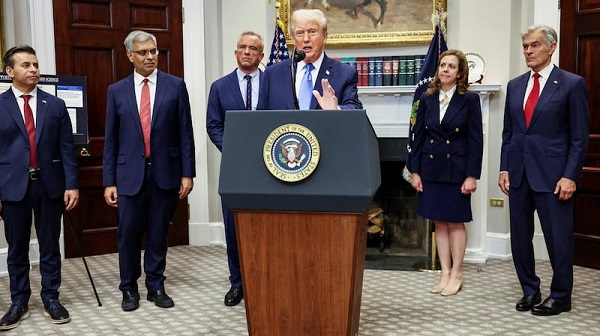
From the Brownstone Institute
By
Trump made sweeping claims that would have ended political careers in any other era. His health officials tried to narrow the edges, but the President ensured that the headlines would be his.
Autism has long been the untouchable subject in American politics. For decades, federal agencies tiptoed around it, steering research toward genetics while carefully avoiding controversial environmental or pharmaceutical questions.
That ended at the White House this week, when President Donald Trump tore through the taboo with a blunt and sometimes incendiary performance that left even his own health chiefs scrambling to keep pace.
Flanked by Health Secretary Robert F. Kennedy, Jr., NIH Director Jay Bhattacharya, FDA Commissioner Marty Makary, CMS Adminstrator Dr Mehmet Oz, and other senior officials, Trump declared autism a “horrible, horrible crisis” and recounted its rise in startling terms.
“Just a few decades ago, one in 10,000 children had autism…now it’s one in 31, but in some areas, it’s much worse than that, if you can believe it, one in 31 and…for boys, it’s one in 12 in California,” Trump said.
The President insisted the trend was “artificially induced,” adding: “You don’t go from one in 20,000 to one in 10,000 and then you go to 12, you know, there’s something artificial. They’re taking something.”
Trump’s Blunt Tylenol Warning
The headline moment came when Trump zeroed in on acetaminophen, the common painkiller sold as Tylenol — known as paracetamol in Australia.
While Kennedy and Makary described a cautious process of label changes and physician advisories, Trump dispensed with nuance.
“Don’t take Tylenol,” Trump said flatly. “Don’t take it unless it’s absolutely necessary…fight like hell not to take it.”
Kennedy laid out the evidence base, citing “clinical and laboratory studies that suggest a potential association between acetaminophen used during pregnancy and adverse neurodevelopmental outcomes, including later diagnosis for ADHD and autism.”
Makary reinforced the point with references to the Boston Birth Cohort, the Nurses’ Health Study, and a recent Harvard review, before adding: “To quote the dean of the Harvard School of Public Health, there is a causal relationship between prenatal acetaminophen use and neurodevelopmental disorders of ADHD and autism spectrum disorder. We cannot wait any longer.”
But where the officials spoke of “lowest effective dose” and “shortest possible duration,” Trump thundered over the top: “I just want to say it like it is, don’t take Tylenol. Don’t take it if you just can’t. I mean, it says, fight like hell not to take it.”
Vaccines Back on Center Stage
The President then pivoted to vaccines, reviving arguments that the medical establishment has long sought to bury. He blasted the practice of giving infants multiple injections at a single visit.
“They pump so much stuff into those beautiful little babies, it’s a disgrace…you get a vat of 80 different vaccines, I guess, 80 different blends, and they pump it in,” Trump said.
His solution was simple: “Go to the doctor four times instead of once, or five times instead of once…it can only help.”
On the measles, mumps, and rubella shot, Trump insisted: “The MMR, I think should be taken separately…when you mix them, there could be a problem. So there’s no downside in taking them separately.”
The moment was astonishing — echoing arguments that had once seen doctors like Andrew Wakefield excommunicated from medical circles.
It was the kind of line of questioning the establishment had spent decades trying to banish from mainstream debate.
Hep B Vaccine under Attack
Trump dismissed the rationale for giving the hepatitis B vaccine at birth.
“Hepatitis B is sexually transmitted. There’s no reason to give a baby that’s just born hepatitis B [vaccine]. So I would say, wait till the baby is 12 years old,” he said.
He made clear that he was “not a doctor,” stressing that he was simply offering his personal opinion. But the move could also be interpreted as Trump choosing to take the heat himself, to shield Kennedy’s HHS from what was sure to be an onslaught of criticism.
The timing was remarkable.
Only last week, the CDC’s Advisory Committee on Immunisation Practices (ACIP) had been preparing to vote on whether to delay the hepatitis B shot until “one month” of age — a modest proposal that mainstream outlets derided as “anti-vax extremism.”
By contrast, Trump told the nation to push the jab back 12 years. His sweeping denunciations made the supposedly radical ACIP vote look almost tame.
The irony was inescapable — the same media voices who had painted Kennedy’s reshaped ACIP as reckless now faced a President willing to say far more than the panel itself dared.
A New Treatment and Big Research Push
The administration also unveiled what it deemed a breakthrough: FDA recognition of prescription leucovorin, a folate-based therapy, as a treatment for some autistic children.
Makary explained: “It may also be due to an autoimmune reaction to a folate receptor on the brain not allowing that important vitamin to get into the brain cells…one study found that with kids with autism and chronic folate deficiency, two-thirds of kids with autism symptoms had improvement and some marked improvement.”
Dr Oz confirmed Medicaid and CHIP (the Children’s Health Insurance Program, which provides low-cost health coverage to children in families that earn too much to qualify for Medicaid) would cover the treatment.
“Over half of American children are covered by Medicaid and CHIP…upon this label change…state Medicaid programs will cover prescription leucovorin around the country, it’s yours,” said Oz.
Bhattacharya announced $50 million in new NIH grants under the “Autism Data Science Initiative.”
He explained that 13 projects would be funded using “exposomics” — the study of how environmental exposures like diet, chemicals, and infections interact with our biology — alongside advanced causal inference methods.
“For too long, it’s been taboo to ask some questions for fear the scientific work might reveal a politically incorrect answer,” Bhattacharya said. “Because of this restricted focus in scientific investigations, the answers for families have been similarly restricted.”
Mothers’ Voices
The press conference also featured raw testimony from parents.
Amanda, mother of a profoundly autistic five-year-old, told Trump: “Unless you’ve lived with profound autism, you have no idea…it’s a very hopeless feeling. It’s very isolating. Being a parent with a profound autistic child, even just taking them over to your friend’s house is something we just don’t do.”
Jackie, mother of 11-year-old Eddie, said: “I’ve been praying for this day for nine years, and I’m so thankful to God for bringing the administration into our lives…I never thought we would have an administration that was courageous enough to look into things that no prior administration had.”
Their stories underscored what Kennedy said at the announcement about “believing women.” Here were mothers speaking directly about their lived reality, demanding that uncomfortable conversations could no longer be avoided.
Clashes with the Press Corps
Reporters pressed Trump on the backlash from medical groups.
Asked about the American College of Obstetricians and Gynecologists (ACOG) declaring acetaminophen safe in pregnancy, Trump shot back, “That’s the establishment. They’re funded by lots of different groups. And you know what? Maybe they’re right. I don’t think they are, because I don’t think the facts bear it out at all.”
When one journalist raised the argument that rising diagnoses reflected better recognition, Kennedy bristled,
“That’s one of the canards that has been promoted by the industry for many years,” he said. “It’s just common sense, because you’re only seeing this in people who are under 50 years of age. If it were better recognition or diagnosis, you’d see it in the seventy-year-old men. I’ve never seen this happening in people my age.”
Another reporter then asked Trump, “Should the establishment media show at least some openness to trying to figure out what the causes are?”
“I wish they would. Yeah, why are they so close-minded?” Trump replied. “It’s not only the media, in all fairness, it’s some people, when you talk about vaccines, it’s crazy…I don’t care about being attacked.”
Breaking the Spell
For years, autism policy has been shaped by caution, consensus, and deference to orthodox positions. That spell was broken at today’s press conference.
The dynamic was striking. Kennedy, Makary, Bhattacharya, and Oz leaned on scientific papers, review processes, and cautious advisories. Trump, by contrast, brushed it all aside, hammering his message home through repetition and personal anecdotes.
Trump made sweeping claims that would have ended political careers in any other era. His health officials tried to narrow the edges, but the President ensured that the headlines would be his.
“This will be as important as any single thing I’ve done,” Trump declared. “We’re going to save a lot of children from a tough life, really tough life. We’re going to save a lot of parents from a tough life.”
Whatever the science ultimately shows, the politics of autism in America will never be the same.
Republished from the author’s Substack
-

 Alberta2 days ago
Alberta2 days agoClick here to help choose Alberta’s new licence plate design
-
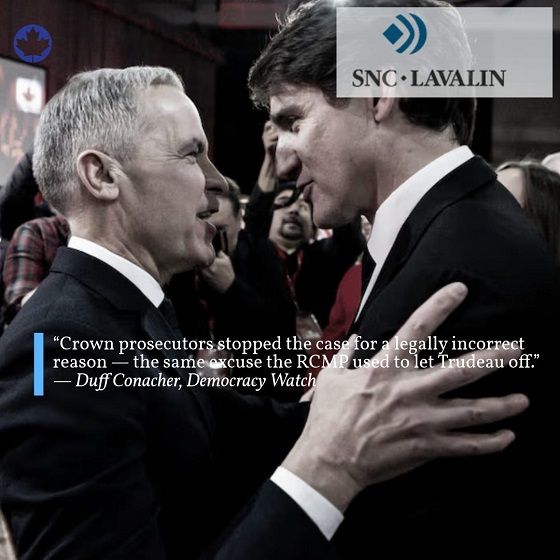
 National2 days ago
National2 days agoDemocracy Watch Renews Push for Independent Prosecutor in SNC-Lavalin Case
-

 Alberta2 days ago
Alberta2 days agoBusting five myths about the Alberta oil sands
-

 Frontier Centre for Public Policy2 days ago
Frontier Centre for Public Policy2 days agoOttawa Should Think Twice Before Taxing Churches
-

 Business1 day ago
Business1 day agoUS government buys stakes in two Canadian mining companies
-
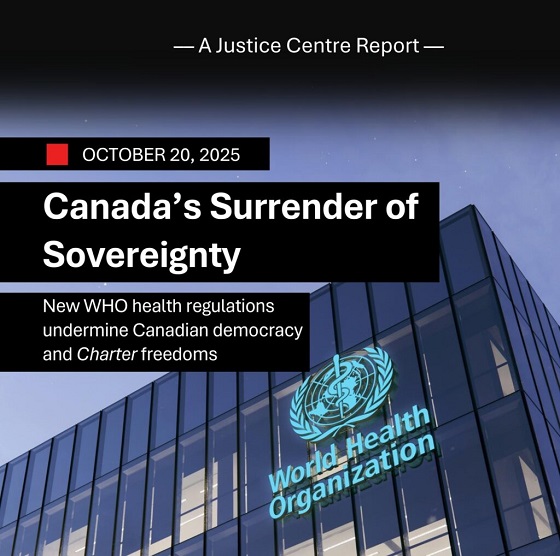
 Health1 day ago
Health1 day agoNew report warns WHO health rules erode Canada’s democracy and Charter rights
-

 Energy1 day ago
Energy1 day agoMinus Forty and the Myth of Easy Energy
-
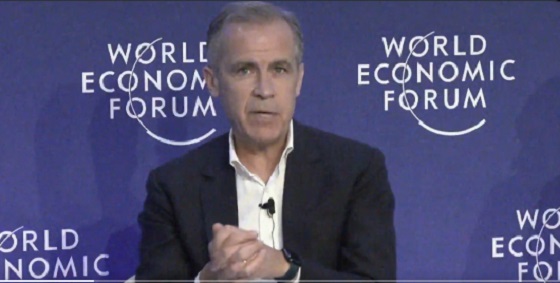
 Business5 hours ago
Business5 hours agoEmission regulations harm Canadians in exchange for no environmental benefit








